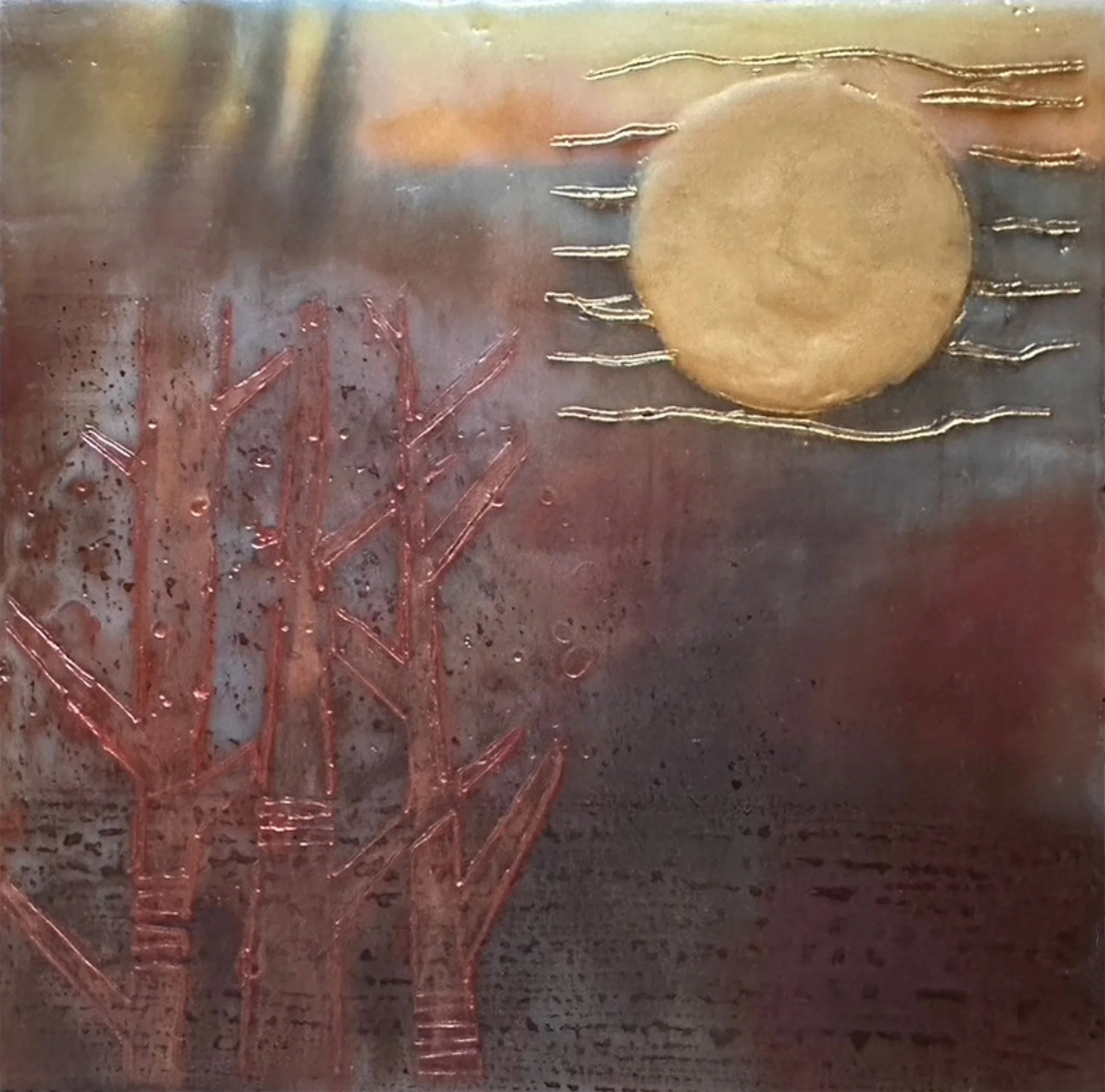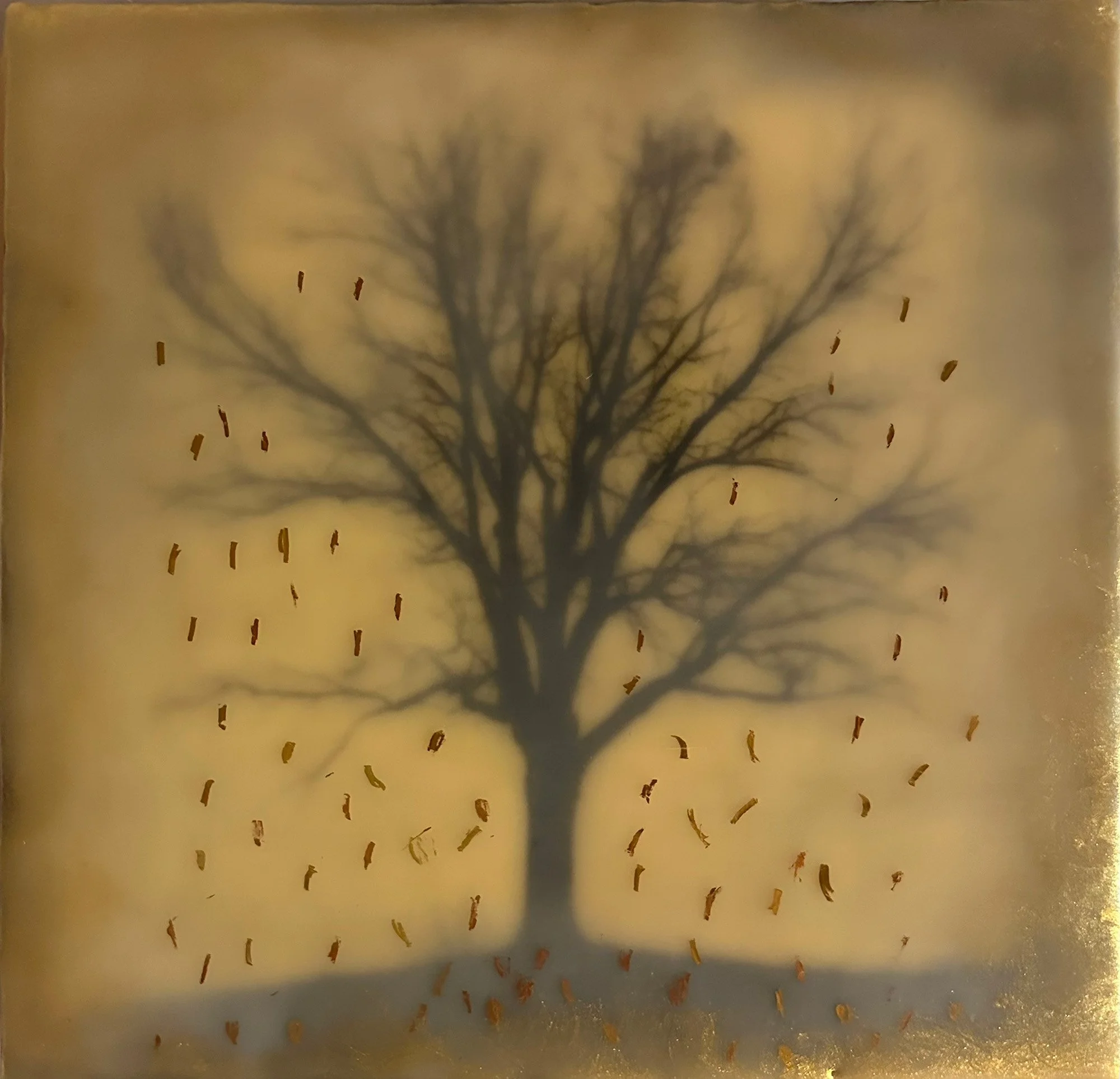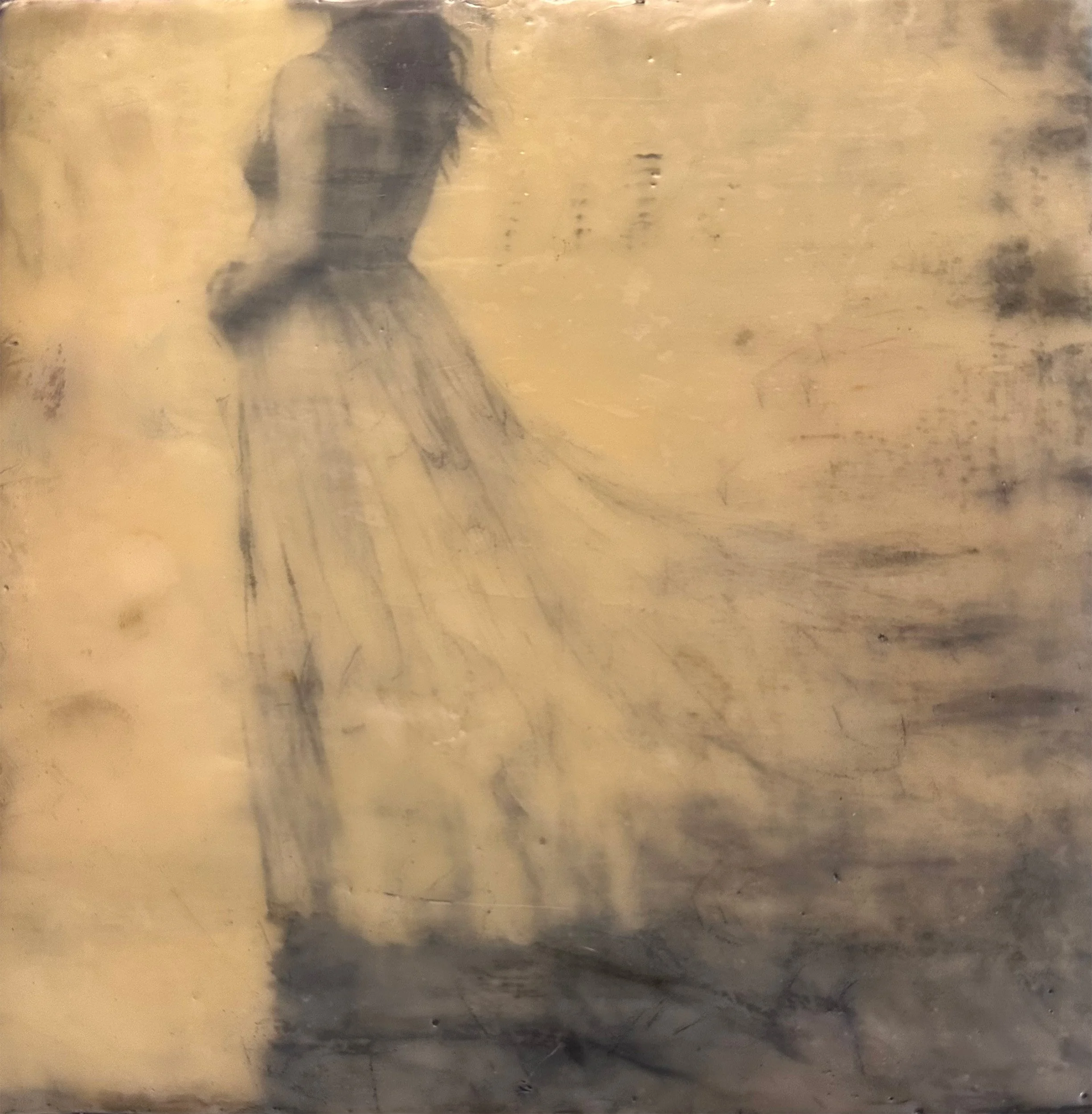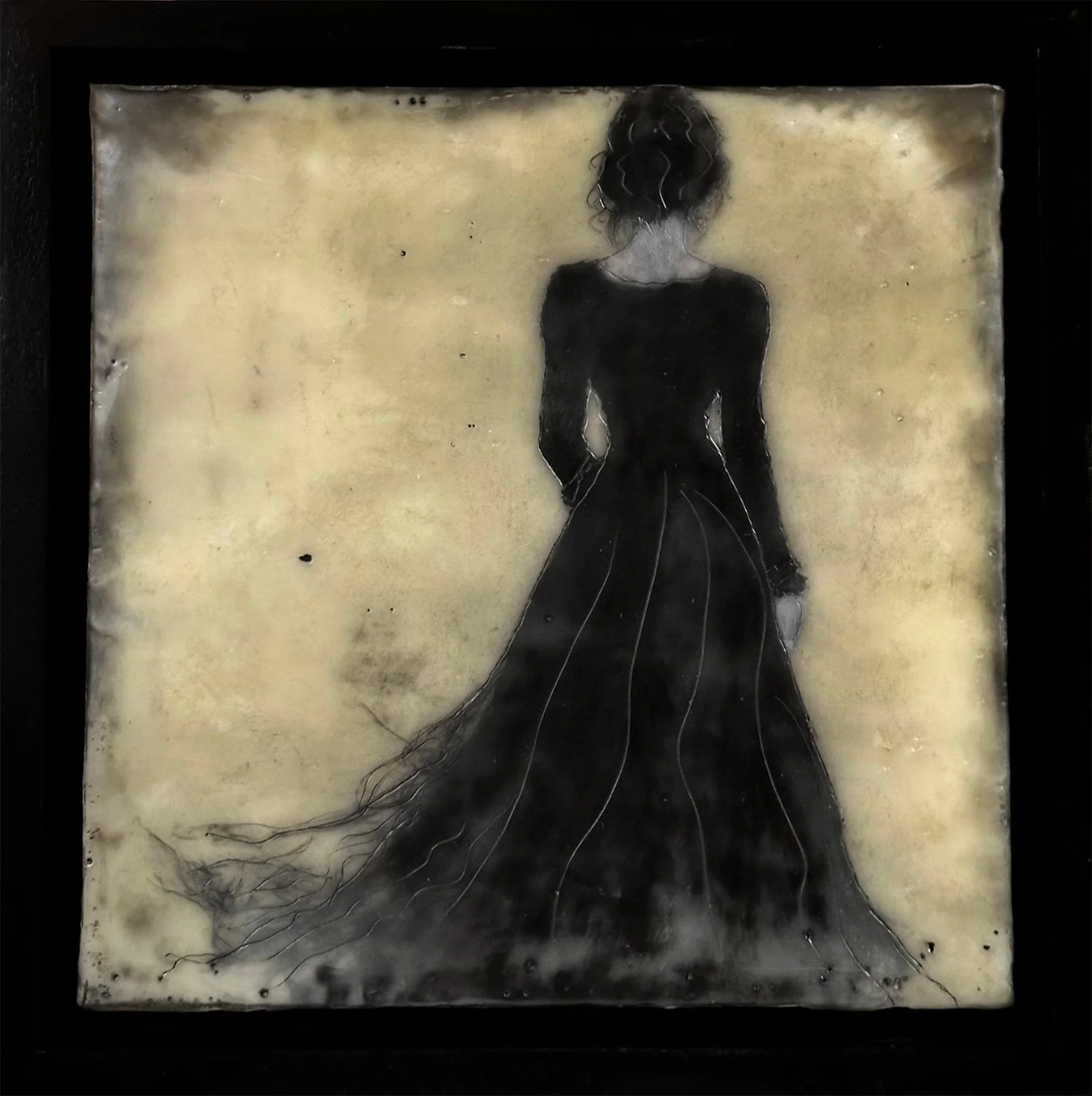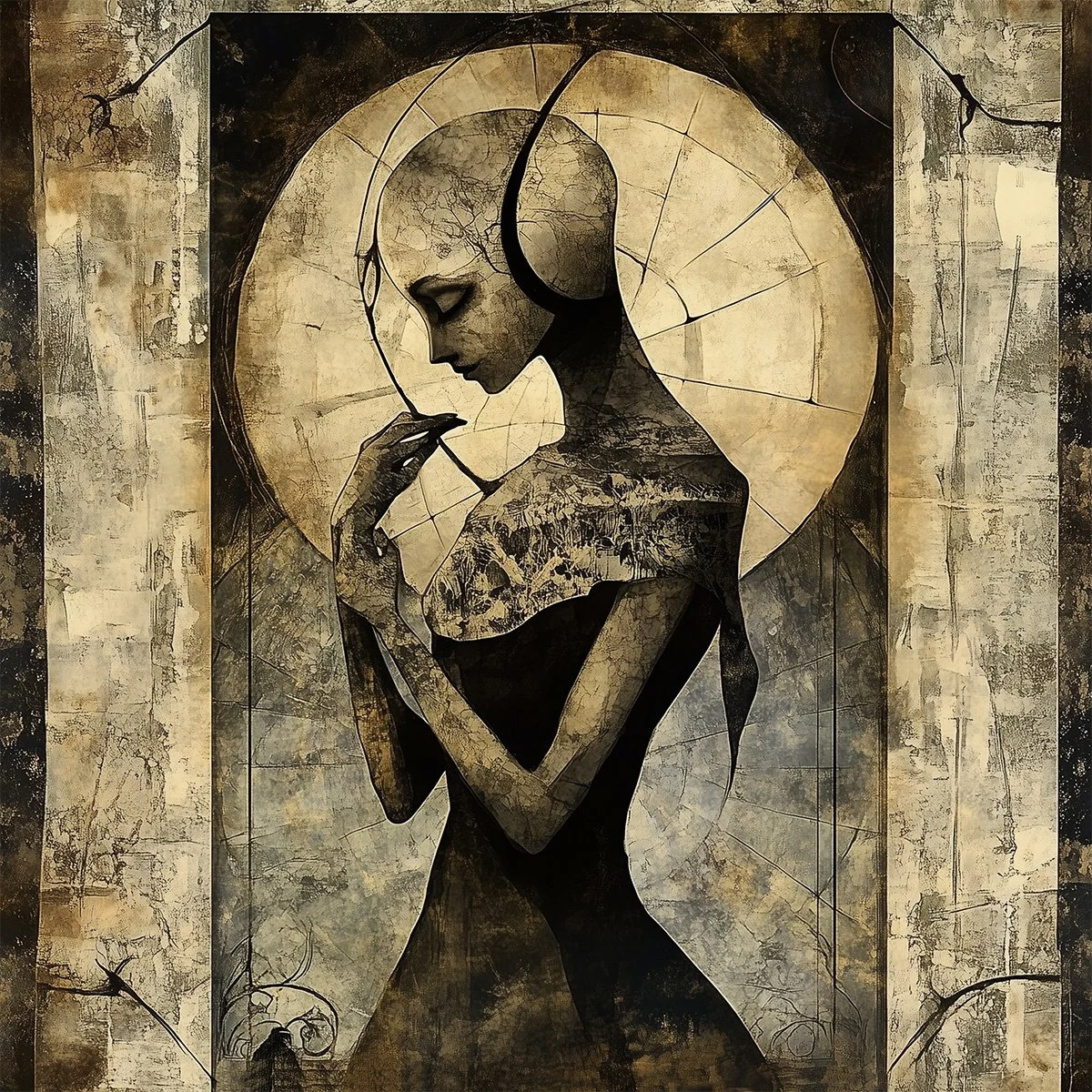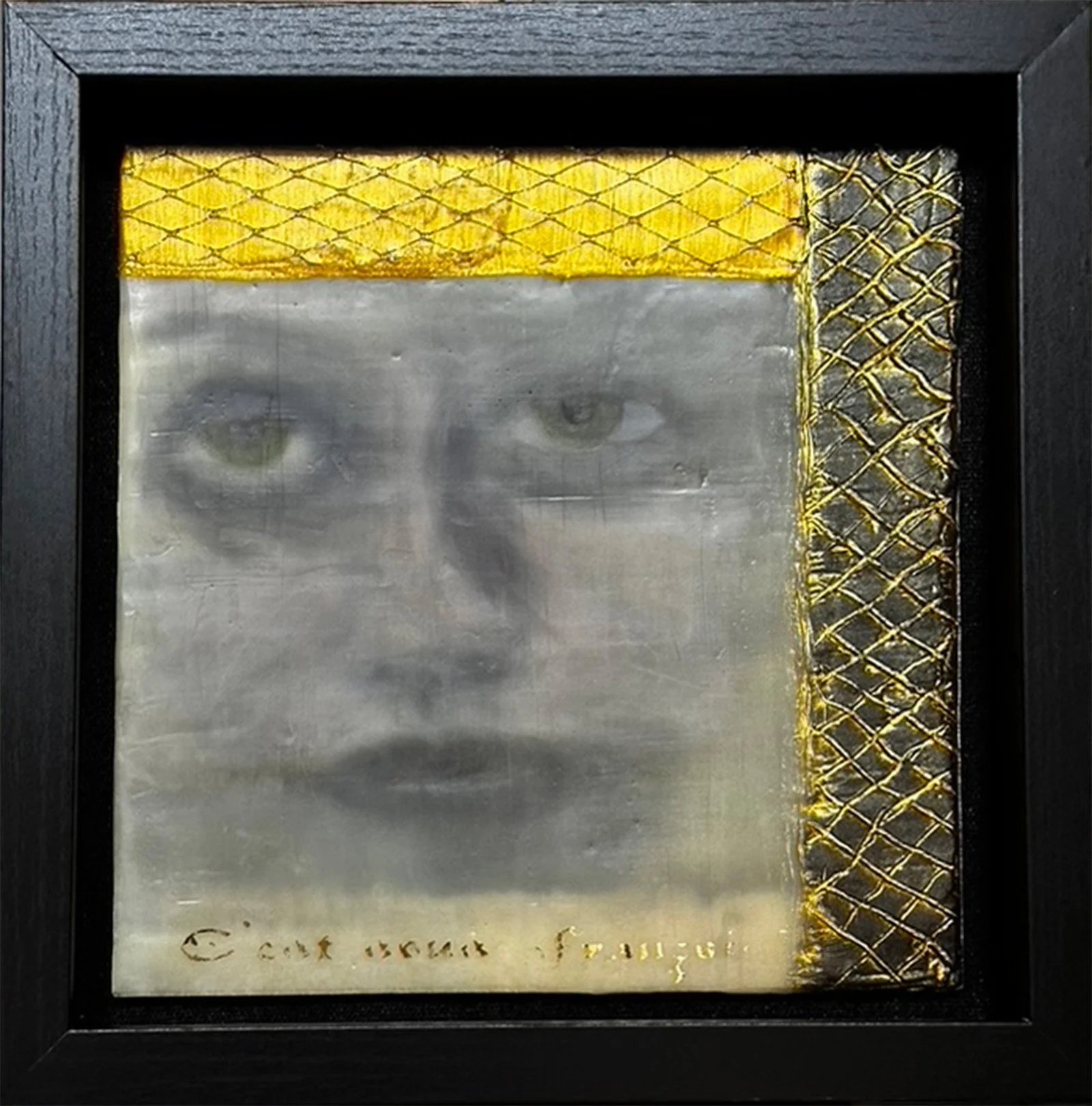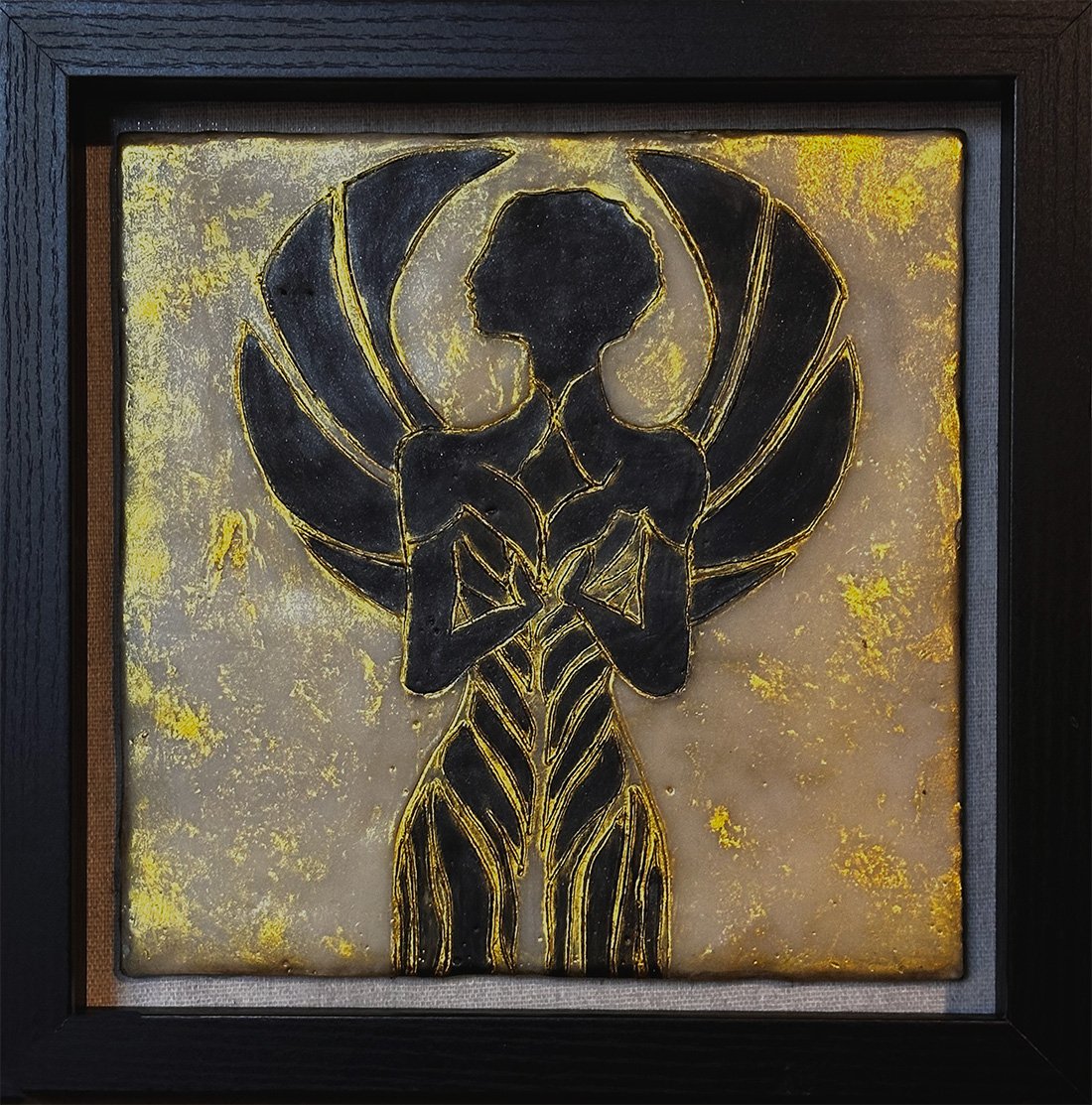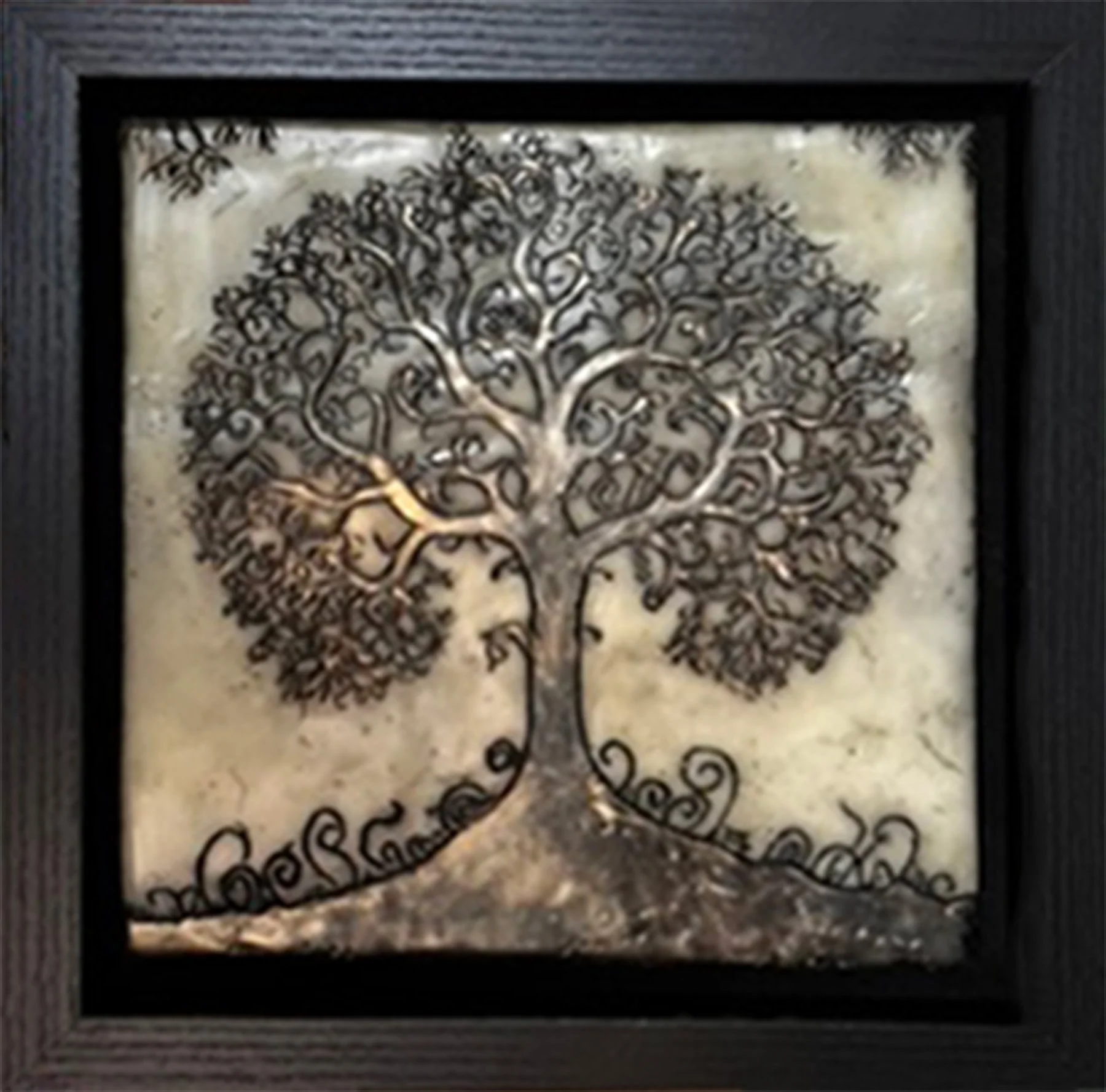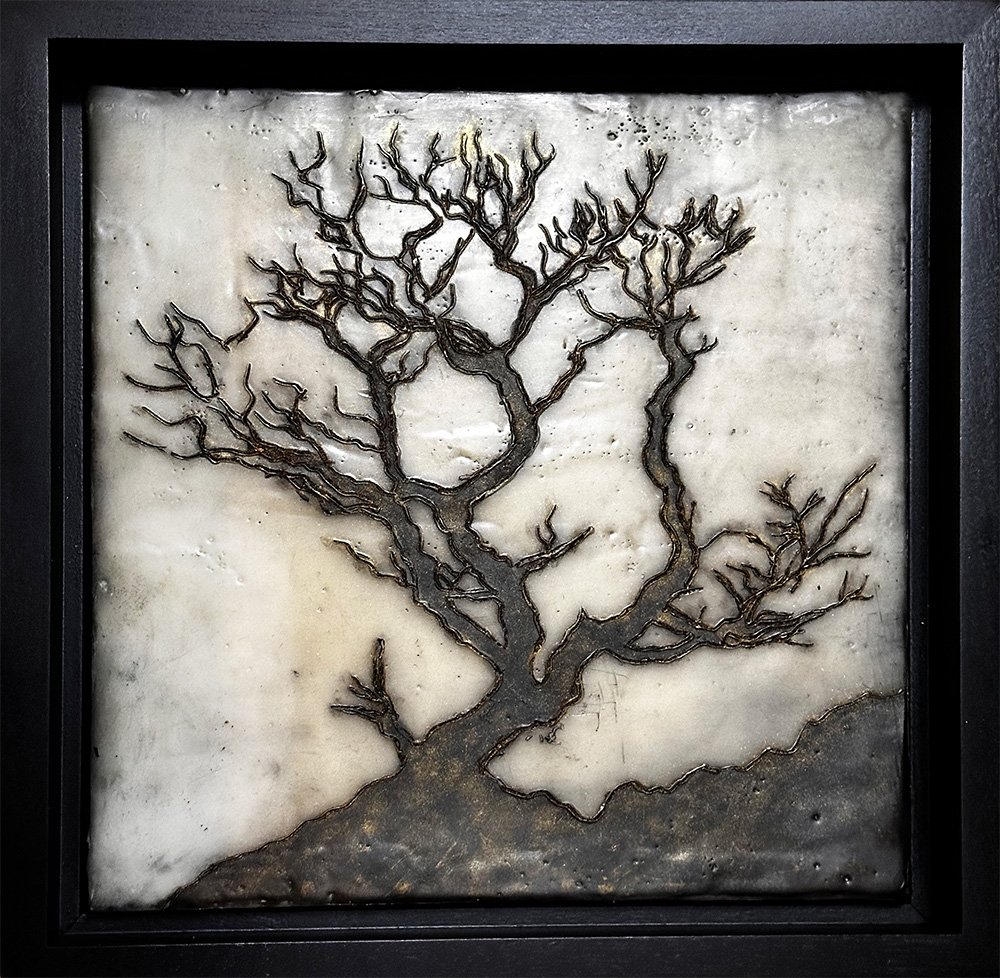Encaustic
The word “encaustic” is derived from the Greek word “enkaustikos” meaning “to heat” or “burn in”. The medium consists of beeswax which acts as a binder and Damar Resin, a natural tree sap which hardens and contributes to clarity and durability. Pigments added can be powder, oil paints or other compatible materials. Encaustic painting was used by Greek artists as far back as the 5th century B.C. to adorn sculptures, murals, ships and architecture. Alexander the Great’s Conquest of Egypt (late 4th century B.C.) led to a significant Greek presence in the region. Greek-trained Egyptians started to incorporate encaustic paint into their paintings as well as mummification practices. The most well-known encaustic paintings are the Fayum Mummy Portraits which are over 2000 years old. They are remarkable examples of the durable and archival nature due to the wax’s moisture-resistant properties. The layering of translucent encaustic wax creates a unique depth and luminous quality.
Sun & Forest
Bare Tree #1
Falling Leaves
Gold & Black Tree
Gold Tree with Blue
Ankle Deep
Gothic Tree-gray
Dragonfly
Hear Me, See Me
Paris Train Station
Stepping Stones
Memories
Hydrangeas
Eye See You
Turning Point
Wooden Cat
Falling Leaf
Mystical
Party
I'm Here
Radiant Maiden
Watching
Gothic Tree-copper
The Crossing
Unacceptable
Bare Tree #3
Bare Tree #4
Friends

